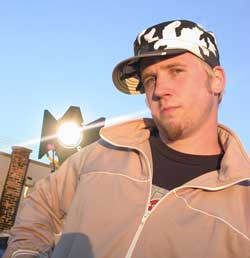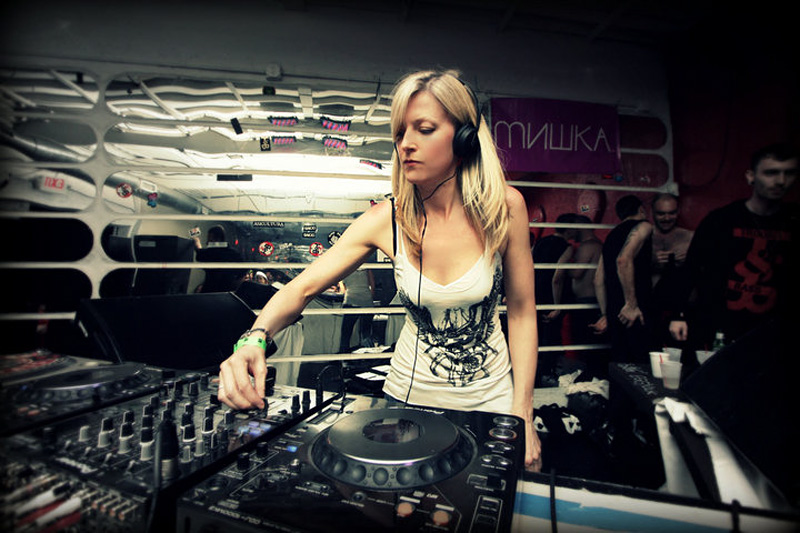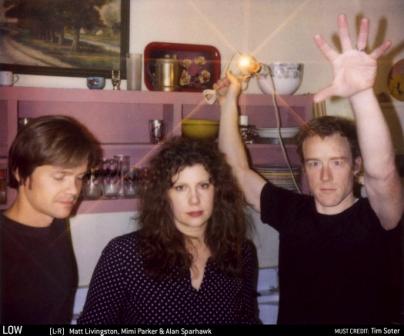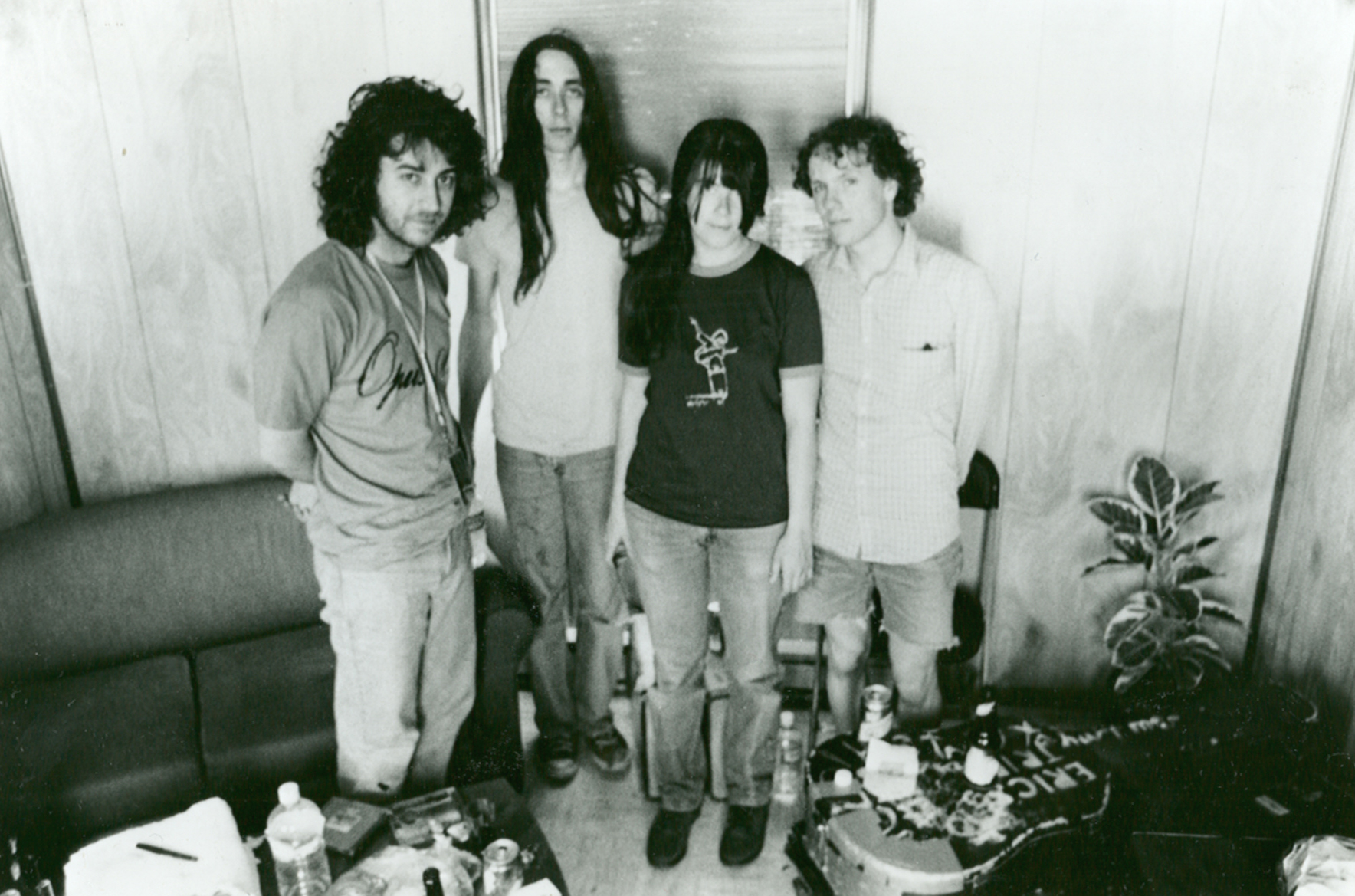If you passed him on the street, Kevin Sawka would appear to be a typical 28-year-old guy: Living in a modest Roosevelt house with his roommate and a border collie named Gaia, the carpenter-by-day is soft-spoken and friendly, his blond hair with faded streaks of blue and green underneath a ball cap. He lives the musician’s life—working hard, occasionally getting high, writing music, and jamming with his friends—but it’s the kind of music he makes, solo and with his group as KJ Sawka, that distinguishes him as a dynamo, and maybe even a prodigy.
“There are at least a handful [of drummers] in each city who do drum and bass, but don’t really gig,” Sawka says. He’s not the only one using a traditional kit to bang out complex rhythms usually born from machines, the most memorable being the rolling Amen break that characterizes drum and bass. But an appreciation of music that ranges from Primus to the Chemical Brothers, consistent performances, and intense practice (aiming for eight hours a day) have made him the one in Seattle’s public eye.
And in Sawka’s case, seeing is believing. It’s hard to describe the spectacle of the drummer’s live show—moving through Ninja Tune–paced trip-hop to breakneck drum and bass with flawless precision—other than to compare it to a sonic storm, with Sawka as the calm center. “It’s been ingrained in my muscle memory to play fast and for a long time,” he says. “You gotta use a little more technique and finesse when you do drum and bass—there’s more small finger movement, and it’s really dynamic.”
Sawka’s acoustic set is tricked out with electronic pads and samplers; twisted sounds come from cymbals stacked three or four high, preprogrammed bass lines and effects, and live loops of his frantic snare hits. Listening to his self-produced Synchronized Decompression, released last fall on local label Wax Orchard, it’s easy to forget that a human created the beats in real time, but the disc stands up to the computer-forged assault of Bad Company’s 160-bpm breaks as well as the fluid, undulating ones of LTJ Bukem, the producer who was Sawka’s introduction to drum and bass. He thinks it was Bukem’s atmospheric compilation Earth, Vol. 1 that did it—”I always had this real high-energy way of drumming, but until I heard drum and bass, I had no idea,” says Sawka. “It just totally blew my mind.”
Sawka’s love for drumming started at age 11, when he took an ailing kit off the hands of a relative. Just after graduating from high school in Bothell (“I got out of there as fast as I could,” he says), he began to blend electronic music with rock and funk in the group 94th Street. While that outfit didn’t last long, Sawka’s dexterous skills gained momentum—and attention from music community elders like former Santana drummer Michael Shrieve and jazz guitarist Bill Frisell—leading him to open for electronic luminary Amon Tobin and Bukem himself. Sawka next formed the improv band Siamese, who toured the U.S. in 2002 and played marathon sets at the Phoenix Festival in rural Washington, a Burning Man–style summit. “We did three eight-hour sets in two days,” Sawka says. “We became totally one with our instruments. It’s like we sweated out all the drugs that were in our body and were going off this pure energy and groove.”
While playing with Siamese, he started writing music alone, “so it could continue for the rest of my life, without breaking up and having to start all over again,” he says, a relief after the group’s dissolution. Working on what would become Synchronized, Sawka gigged Fremont’s improv scene as a four-piece with cellist Gretchen Yanover, keyboardist Kent Halvorsen, and vocalist Christa Wells. “First off, it’s kind of a down-tempo, liquid d’n’b thing, and we started getting into every style of live electronic music. It was really cool to be a part of that,” says Sawka.
Not to mention forward-thinking, at least in the States. Live drum and bass bands are rare, and vocals in the genre are perfunctory or an MC-supplied afterthought, but the exceptions are all British—from Goldie allowing Diane Charlemagne to belt it out on the classic “Inner City Life” to Roni Size and Reprazent, whose New Forms won England’s Grammy equivalent in 1997. Current artists like London Elektricity, a live band incorporating funk, jazz, and breaks, keep things innovative, and as an improv combo, KJ Sawka showcase that creativity in Seattle. Sawka performs alone or with Halvorsen and Wells these days, but Synchronized is a solid capsule of collaboration and postproduction choppage. It gives a good idea of what you’ll hear at a show and where Sawka is headed on a new full-length that’s due this fall.
Wells’ seductive plea on the first single, “Subconnectors,” adds depth as the midrange foil for subterranean bass and skittish snares. Vocalists Miranda Rose and Carly Skone, Siamese member Dave Z, bassist PK, and violinist Eyvind Kang all contributed to the swirling effect of Synchronized, which communicates claustrophobic urban anxiety or soothing respite (like a firm shiatsu massage), depending. “It’s cool sometimes when you think the devil’s gonna get you, but it’s a nicer feeling when the music just encapsulates you,” says Sawka. “It can be dark and scary, but the music can get hold of you in a nice way.”
As Public Enemy said, “Here’s your ticket/Hear the drummer get wicked.”








